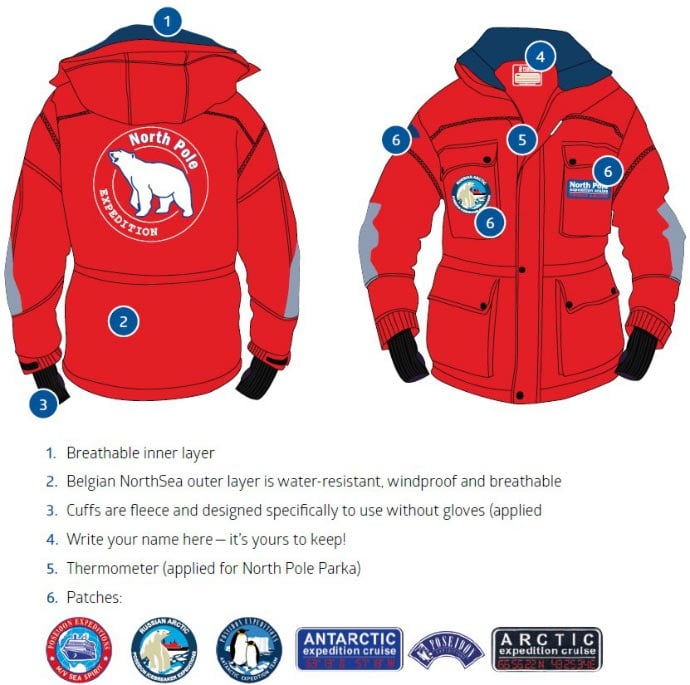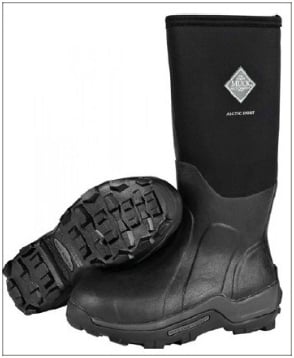Packing List for Antarctic Travelling
Poseidon Expeditions, like other tour operators that take you on adventure cruises to Antarctica, wants you to be comfortable during your trip. That’s easy aboard ship where casual clothing is the norm in the lounge, dining room or lecture room. But polar cruises require a bit of planning because of the extensive time that will be spent outdoors, both ashore and while on deck observing the incredible scenery. Temperatures can vary greatly during the lengthy daylight hours of Antarctic cruises, and the cold can be amplified by windy conditions, fog or precipitation.
Fortunately, the Internet has made finding recommended polar clothing and gear a simple task these days, and Poseidon Expedition has a full page on our website dedicated to this topic. We suggest you review it carefully once you’ve booked your trip, so there is no “last minute” rush to get what you need. Here are a few helpful hints on what to wear on Antarctica tours:
1. Parka
You can check this off your list once you have reserved a cabin with Poseidon Expeditions because we provide a complimentary wind- and weather-resistant shell with hood that is perfect for both landings ashore and deck use. (It’s also a great windbreaker and rain jacket when you return home). We take a lot of pride in custom-designing our parka, and you’ll find it ideal for its intended purpose. All that you’ll need under the parka is a wool sweater or polar fleece jacket (it’s a good idea to bring two or three).

2. Waterproof pants
These are essential for Antarctica vacations, as some splashing and spray is inevitable as you travel by Zodiac landing craft from the ship to shore and then clamber over the side into ankle-deep water (see #3 below). Look for waterproof Gore-Tex or similar fabrics that can breathe, usually sold as ski or snowboarding pants. One pair is enough, but buy them large enough so you can bend and move around comfortably without binding. These pants also make it more inviting to sit in the snow while ashore to take a breather while watching the penguins pass by.
3. Wellingtons
These are really important, so you will want boots that are not only completely waterproof, insulated, and above the calf, but also that fit well—i.e. you will be doing a fair amount of walking while ashore—with enough room for two pairs of socks and to still wiggle your toes. While they are bulky to pack, many Antarctic travelers like to bring their own boots (they are very useful back home for gardening or shoveling snow!).
If you bring used boots, make sure they are thoroughly cleaned of any foreign soil before traveling. Other options include renting boots from an outfitter in your hometown or Ushuaia, where you will board the ship, or borrowing a pair from Poseidon Expeditions once aboard ship (but for this option, check with us when you make your reservation).

4. Thermal underwear
Choose a pair or two—both pants and long-sleeved tops—of varying weight or thickness. We’re not talking about the cotton type your grandparents wore; make sure to shop for modern man-made fibers like polypropylene that wick the perspiration moisture outward and away from the body, keeping you warm. This type also can be easily hand rinsed and dried in your cabin, making you ready for the next day’s landing.
5. Socks, gloves or mittens, and warm cap
These go without saying, but we better say it because people inevitably forget or bring items that aren’t up to the job. A heavier sock, such as wool, pairs well with a lighter polypropylene sock worn next to the skin. Bring several pairs. Same for the gloves or mittens. These should be waterproof, too. The type with a thin polypropylene liner are great, allowing you to pull off the outer layer to take photos while ashore or on deck. The style of warm cap is up to you, but it should certainly be capable of covering your ears when the temperature drops. Plus, a distinctive hat is one of the things that will distinguish you from everyone else!
6. Other essentials
a. Good sunglasses are a must, and they should have UVA filtering abilities. Some people also highly recommend polarized sunglasses, which greatly reduce the glare off ice and water. Bring an extra pair if you can, or even a pair of tinted ski or snowboard goggles for windy conditions.
b. You probably know from past experience if you’ll need seasickness medication, and it’s best to be prepared for this. Simple Dramamine or Bonine tablets work well for many travelers, but those who are more sensitive to motion may want to talk with their physician and opt for something stronger, such as scopolamine patches placed behind the ear. A word of warning about these: some users find that just a quarter- or half-patch provides ample relief and allows them to avoid some of the side effects such as dry mouth, which can be intense with a whole patch.